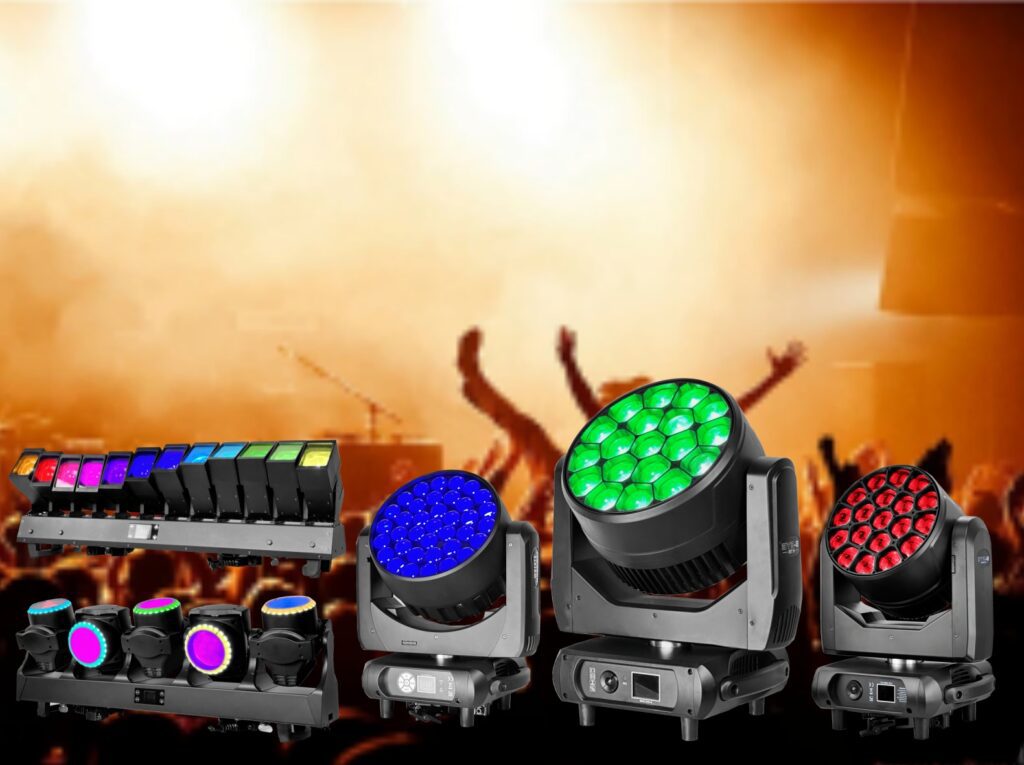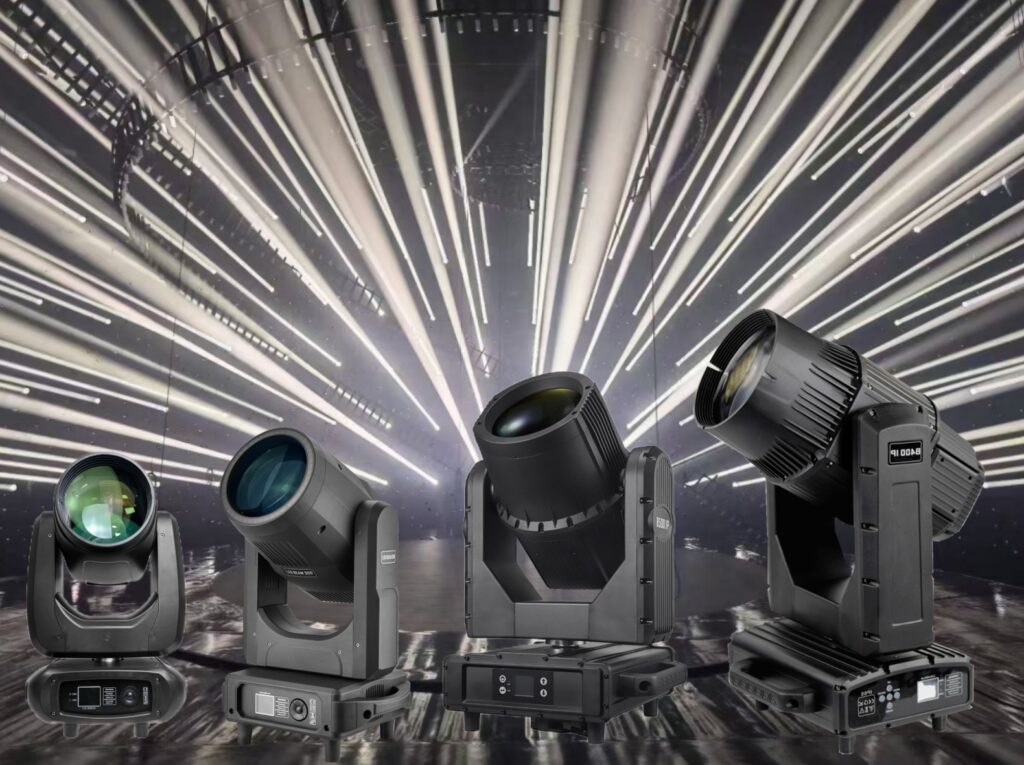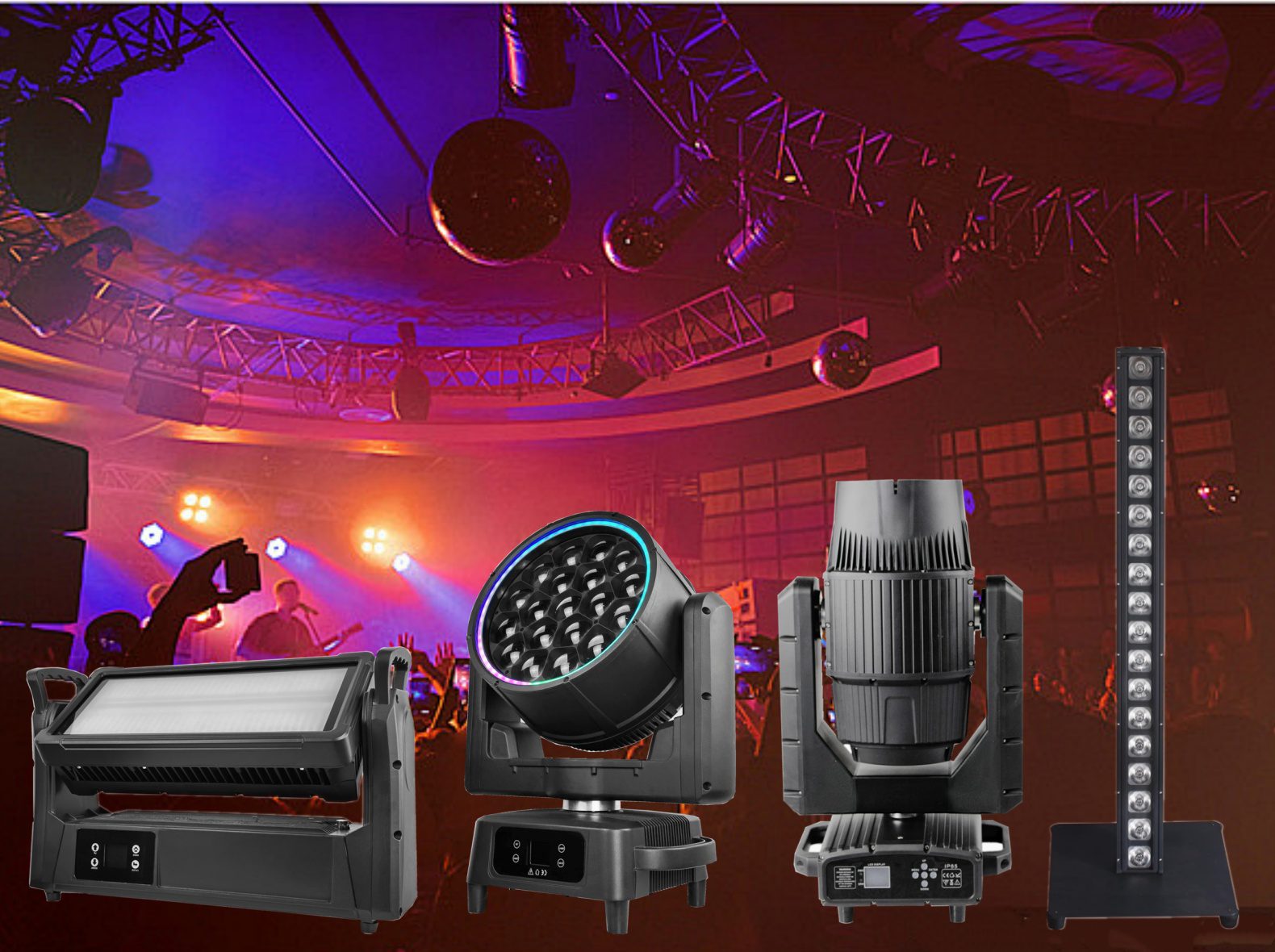When choosing освещение сцены, it is recommended that you consider the four aspects of demand, function, place of use and quality. For example, if you need to render a large area of stage background, choose LED wash lights; if you need to project patterns, choose pattern Spot lights; if you need a sharp beam effect, choose beam lights. At the same time, combined with the size of the venue, light conditions and budget, choose reliable brand products to ensure that the performance of the lamps is stable and durable. In this way, you can easily choose stage lighting equipment that meets your needs and is of high quality!

1.Match functions according to needs:
For example, if you need to render a large area of background color, then LED wash lights are the first choice, which have a large range and rich colors; if you need to create a sharpy beam, emphasize a certain point or create a special effect, then beam lights are more suitable; if you need to move flexibly and light a fixed point, moving head lights (including moving head beam lights, moving head wash lights, moving head pattern lights, etc.) can provide great convenience. Don’t underestimate the difference in functions. If you use the wrong light, the effect may be greatly reduced, or even completely fail to meet expectations.
2.Understand the type and function of the equipment:
Regarding the classification of stage lights, such as wash lights, beam lights, strobe lights, par light
(battery uplights), retro lights (effect lights), gobo lights (Profile lights), spotlights, laser lights, 3 in 1 function, waterproof lights, moving head lights, pixel lights, wall washers, audience lights (blinders), LED lights, bulb lights, etc.
(1) Wash lights

Functional features: Wash lights (such as LED wash lights) are mainly used for large-area color rendering. Through RGBW color mixing technology, they can achieve rich color changes and are suitable for creating an overall atmosphere. They are characterized by wide coverage and high brightness, and are suitable for stage background coloring or overall lighting.
Applicable scenarios: concerts, theater stages, wedding backgrounds, banquet halls, etc.
Wash lights are usually equipped with a lens system with adjustable lens angles. The smaller the angle, the longer the projection distance and the more concentrated the light beam; the larger the angle, the wider the coverage, but the closer the distance.
(2) Beam Light

Functional Features: Beam lights are characterized by creating sharp, concentrated beams. They can achieve dynamic effects such as beam rotation and jumping through the control console, making them very suitable for creating strong visual impacts.
Applicable scenarios: electronic music festivals, rock concerts, large-scale stage performances, etc.
The light of a beam light is focused through a Fresnel lens to form a hard beam effect, which is often used to highlight specific areas or actors on the stage.
3.What I want this light to do?
When choosing stage lighting, we must first clarify “what I want this light to do”, that is, its core functional requirements. Then, based on this core requirement, we should look for the type of lighting that can best meet this requirement in terms of design. For example, LED wash lights are suitable for washes, but beam lights are not.
Why are LED wash lights suitable for washing? Because it has a “large range and high brightness”. The LED light source itself has the advantages of high light efficiency and precise color control. Integrating it into a lamp specially designed for wide-angle projection can well meet the needs of large-area washing. Its optical system (such as Fresnel lens or specific wide-angle lens) is to achieve wide and soft coverage.
Why are beam lights not suitable for washing? The core function of beam lights is to create sharp and concentrated beam effects, emphasizing the shape of the beam itself, the clarity of the cutting edge, and the special light spot produced by the pattern piece. Its optical system (usually a precise elliptical condenser group) is to highly converge the light to form a narrow and bright light column. If you use a beam light to dye, it is like using a precise scalpel to apply paint. The effect can be imagined – the coverage is small, the edges are sharp but unnatural, and it is difficult to achieve a soft and uniform background color. Its high brightness has become a “burden” here, because the light spot is too concentrated and dazzling, and it is not suitable as a large-area background light.
4.The production of stage lights is crucial:
Last but not least, pay attention to the quality and reliability of the lights. Stage lighting often needs to work for a long time and may face physical tests such as transportation and installation. Choosing a good quality brand means higher brightness, more stable color, longer service life, better heat dissipation performance and lower failure rate.
High-quality stage lighting is reflected in the combination of design, material selection, production, functional testing, quality control and other aspects.
Choosing a truly carefully crafted stage light is not only responsible for your performance, but also the best foil for every wonderful moment on the stage. I hope this article can illuminate the way for you to choose, find the most suitable light for you, and help you shine on the stage!

